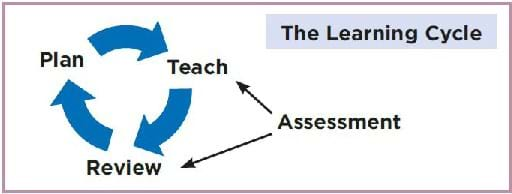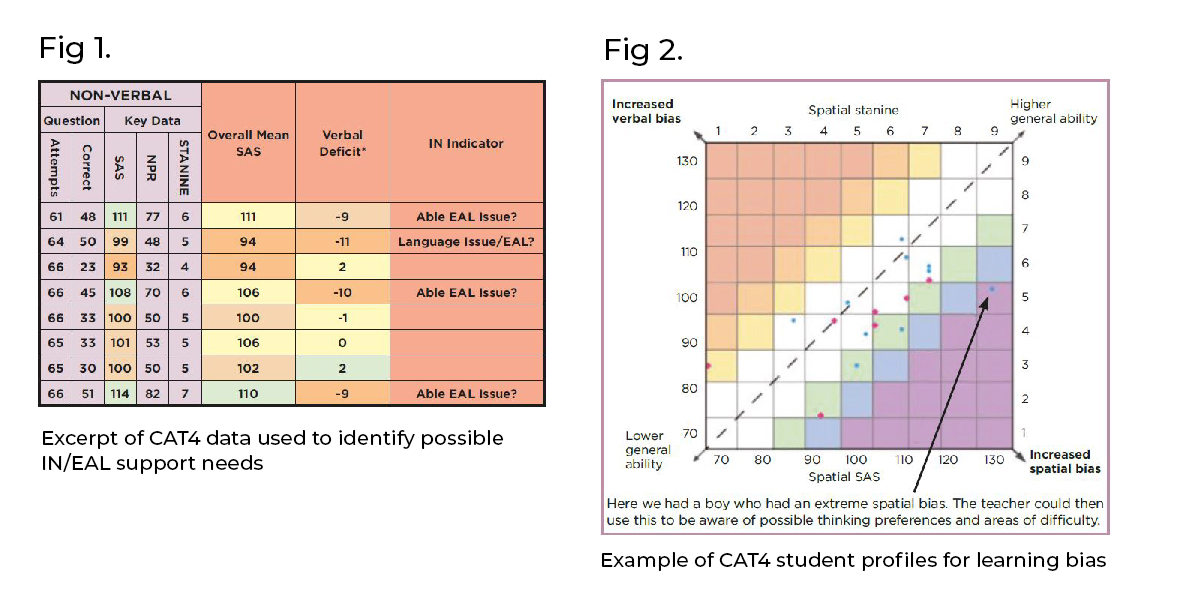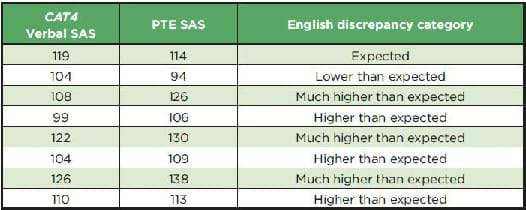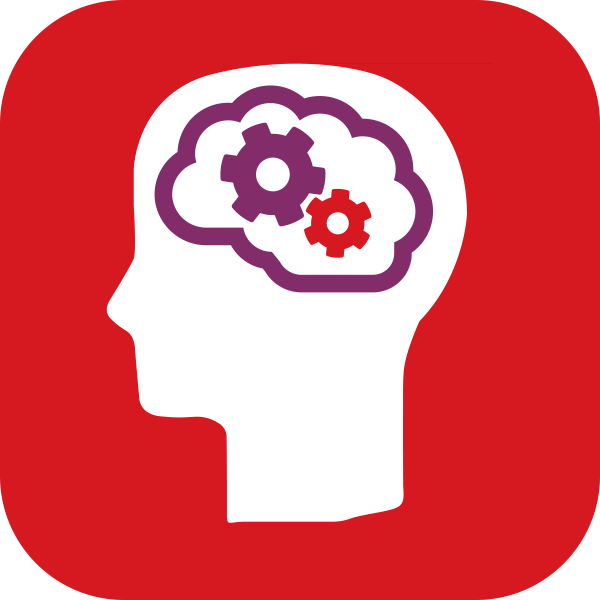“ ”

Assessment data must be fed back into the cycle to improve learning.
The Learning Cycle: assessment for teaching
Within the learning cycle, CAT4 and PT Series data gives the school clues for possible intervention needs. Doing this on entry allows support services to be targeted to individual learners as they arrive in school.
From point of admission CAT4 can be used to identify English as an Additional Language (EAL) needs and Individual Needs (IN) through analysis of verbal deficits (which is a possible EAL indicator) and non-verbal standard age scores (SAS) (which is a possible IN indicator). The verbal deficit is calculated by subtracting the non-verbal SAS from the verbal SAS provided by CAT4.
CAT4 student profiles can also be used to identify extreme bias in thinking (either spatial or verbal) and this, along with the learning advice given in CAT4 reports, can be used to adapt provision in the classroom.
Key elements of learning can also be identified using the process categories and curriculum content from the PT Series reports.

The Learning Cycle: assessment for review
Once children are at the school, the PT Series and regular referrals back to CAT4 indicated outcomes allows identification of how a child is progressing as part of the review of the learning cycle.
A comparison of learning outcomes from the Progress Test in Maths (PTM) and Progress Test in English (PTE) SAS and CAT4 SAS gives a trajectory or expected path for progress in attainment. This can be highlighted most effectively through the combination reports where:
- CAT4 Verbal SAS is compared with PTE SAS to identify relative progress in reading
- CAT4 Quantitative SAS is compared with PTM SAS to identify relative progress in mathematics.
Comparison of CAT4 and PT Series scores can then be used to identify children who need more support or to identify the ‘value added’ by the school to a child’s expected progress.

Key elements of learning can also be identified using the process categories and curriculum content from the PT Series reports.

CAT4 Verbal SAS is compared with PTE SAS to identify relative progress in reading.

CAT4 Quantitative SAS is compared with PTM SAS to identify relative progress in mathematics.
Identifying needs and strategies for intervention
Data driven dialogues are a key process for identifying needs in mixed teams and then year groups or departments. Teams analyse data from combination reports and from internal formative assessment systems.
These also emphasise knowledge of the child; how they learn, and their pastoral needs that can affect learning.
From here the teachers can look at ‘dips’ in the progress of children in their cohort or department and begin to formulate strategies to intervene to get the children ‘back on track’. A team approach ensures that everyone is aware of pupils’ needs and the team share ideas and resources to support those most in need.
Example of identification and intervention
Iain explains: "For over two years , one student had been identified as ‘underperforming’ in terms of their written work by teachers – but there was nothing to indicate this from their PT Series scores. The child was also on track according to their indicated outcomes from CAT4 carried out 3 years before. However, their writing performance in class seemed strongly at odds with their verbal abilities and attitude to learning. This had been flagged up to Learning Support, but nothing indicated a strong need in comparison to others in the year group.
When the student sat the new CAT4 assessments, the learning bias profile was anticipated with some interest. It was expected that perhaps the child had an extreme spatial bias as they were a strong artist and excelled in visually representing ideas. The report revealed that there was indeed a clear spatial bias. The teacher then worked with Learning Support and focused on creating presentations and resources orientated to the child’s spatial bias, allowing them to use images and symbols to represent ideas and reasoning. The use of a device for presenting information through video or audio, as well as using the dictation function, allowed the child to develop their ideas for writing more fully.
However, CAT4 had flagged up another issue: the child’s indicators for all areas had dropped and were now strongly at odds with how she operated in class. This was used by the teacher to get more detailed assessments from Learning Support.
From this it was discovered that the child was affected by Irlens Syndrome – visual stress which resulted in written pages looking warped and making reading and writing much more difficult. Prescription of specific glasses would help correct this. The child is now making good progress and their results on assessments are expected to show excellent progress."

Future Developments
Iain explains how the school are looking to develop their use of data:
"The CAT4 combination reports provide data that is easy to analyse and we intend to ensure that this, along with the learning bias data, are integrated better into our review process.
This information, alongside our internal teacher assessments, will continue to inform our data driven dialogues and help us to continue to improve teaching and learning."



